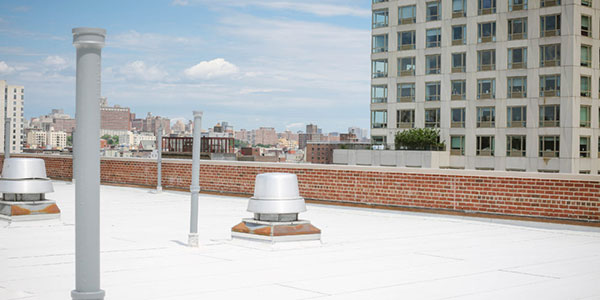Your Guide to Correctly Identifying Historic Tiles

By Evelyn Witterholt.
Restoring a historic tile roof? Here’s what to know about identifying the roof’s materials.
If you’re repairing a roof with historic tiles, it can be hard to pin down exactly what type of material the roof is made of due to the home’s age. While it might be easier to replace the whole roof, the customer may want to maintain the historical look, which will require you to hunt down a matching tile. Thankfully, there are a few ways to figure out what kind of tile you are looking for in your search.
Knowing what types of tiles are used on historic homes and where they are most common can help speed up the identification process. Here are the types of historic tiles to look for:
Clay tiles
According to IKO, clay tiles were used mostly in the 17th century in areas with Spanish influences or in places where fires were a major concern. The most common kinds of clay tiles were rounded with an S-curve, but flat tile types were found in the Northeast. They can also be found on mid-19th century revivalist-style homes such as Italianate and Richardson Romanesque.
National Park Service says that most flat tiles of this era were about 10’’ by 6’’ by ½'’ with two holes on one end for nails or fasteners. Mortar can be found on these tiles as this was also used to secure the tile to the roof.
Slate
While slate is not as common on historical homes as clay tiles, it did see a rise in popularity in pre-revolution America due to increased access. This revival in slate tiles in the early 20th century was seen on larger buildings such as churches, mansions and government buildings.
Standard slate tiles of this time would be about 10’’ by 6’’ and ¼ inch thickness. They came in a variety of colors like red, green or purple and thus, were an aesthetically pleasing choice for Gothic or Mansard style homes.
Tile identification service
If you’re still stumped on what kind of tile you’re looking for, or if you want to pin down the exact tile model, All Points Tile has their handy Tile Identification Service for you to use. All Points specializes in procuring hard-to-find roofing tiles and slate and they are sure to help you find what you are looking for. All you have to do is send them images of the tile along with accurate measurements. From there, they will locate the tile in their yard or source from one of their many connections to get you the right materials. Either way, they will help you find what you’re looking for.
Learn more about All Points in their RoofersCoffeeShop® Directory or visit AllPointsTile.com.
About Evelyn
Evelyn works as a writer for RoofersCoffeeShop and AskARoofer. When she isn’t writing about roofing, she’s either at the gym lifting weights or curled up on the couch watching a movie.


















-2025-xtv-mls-tour-2.png)


Comments
Leave a Reply
Have an account? Login to leave a comment!
Sign In